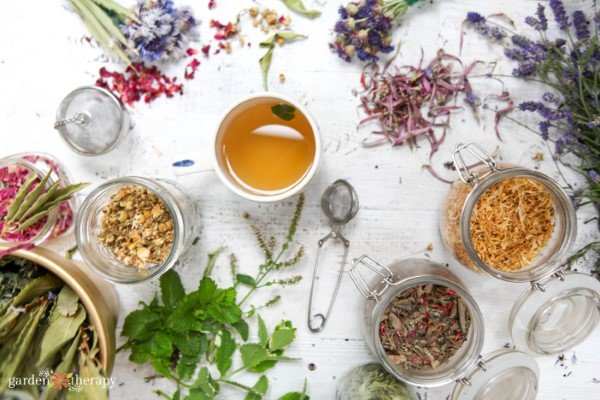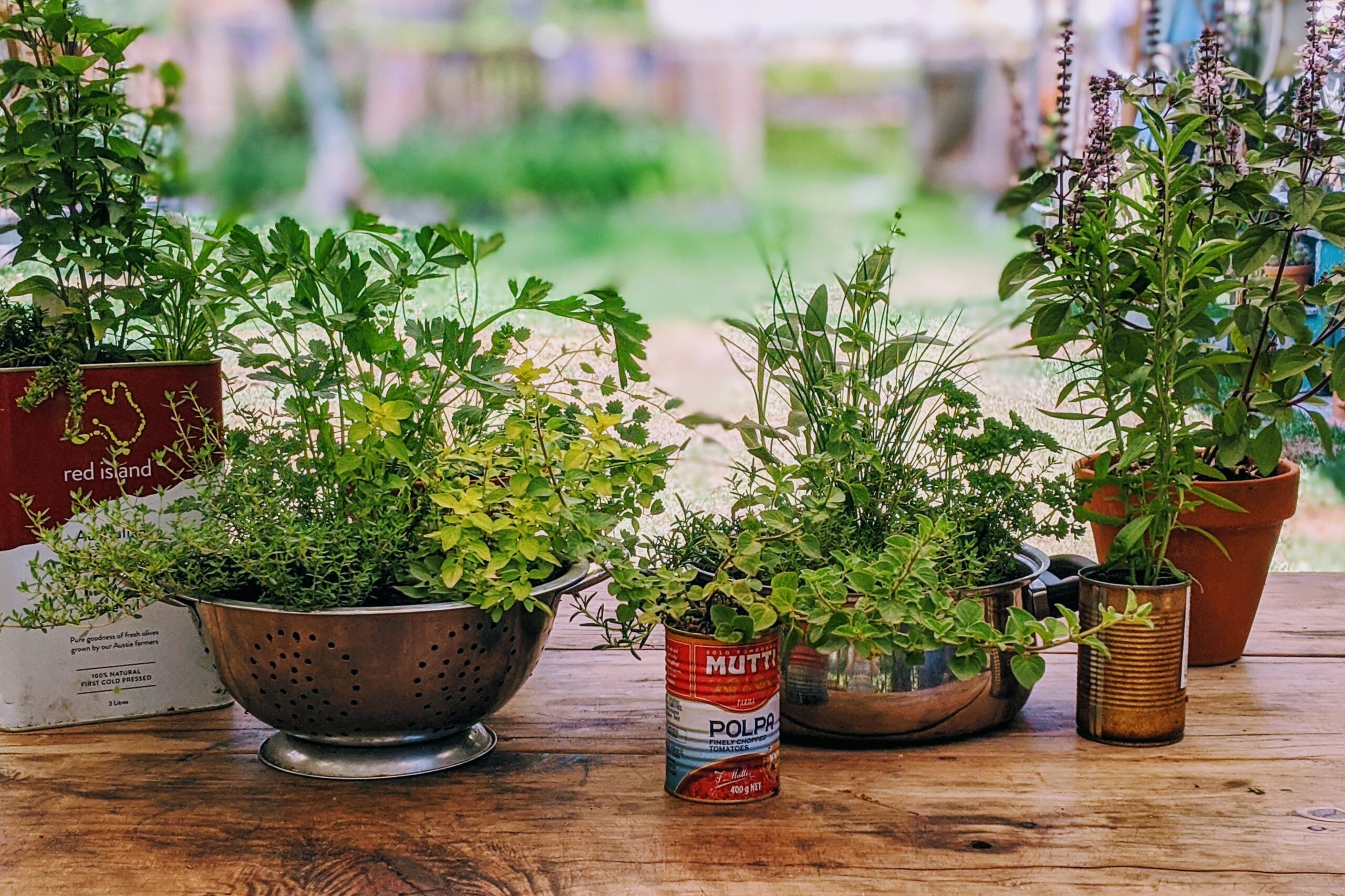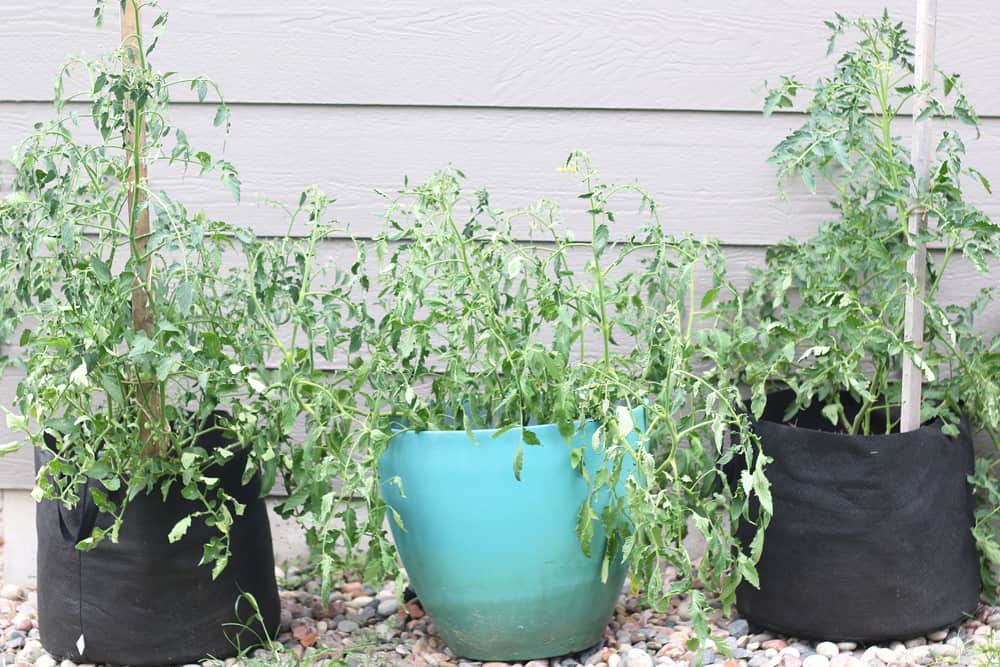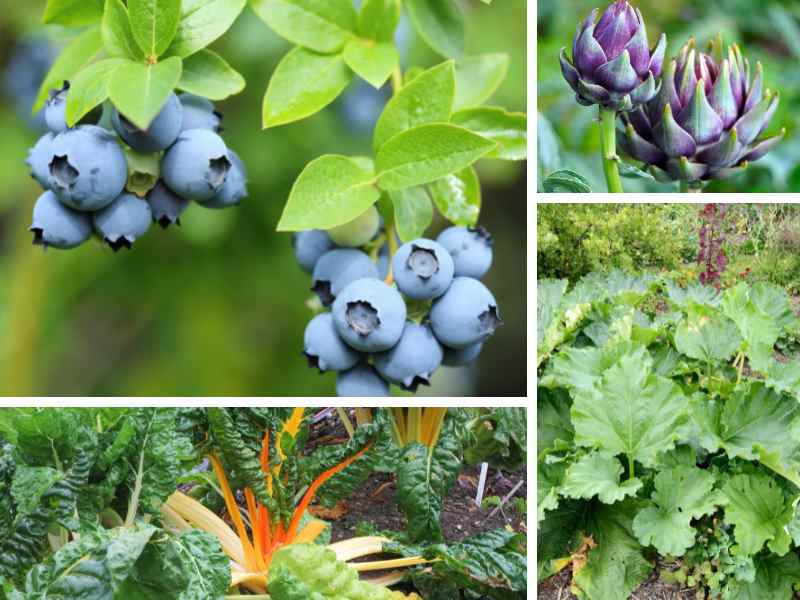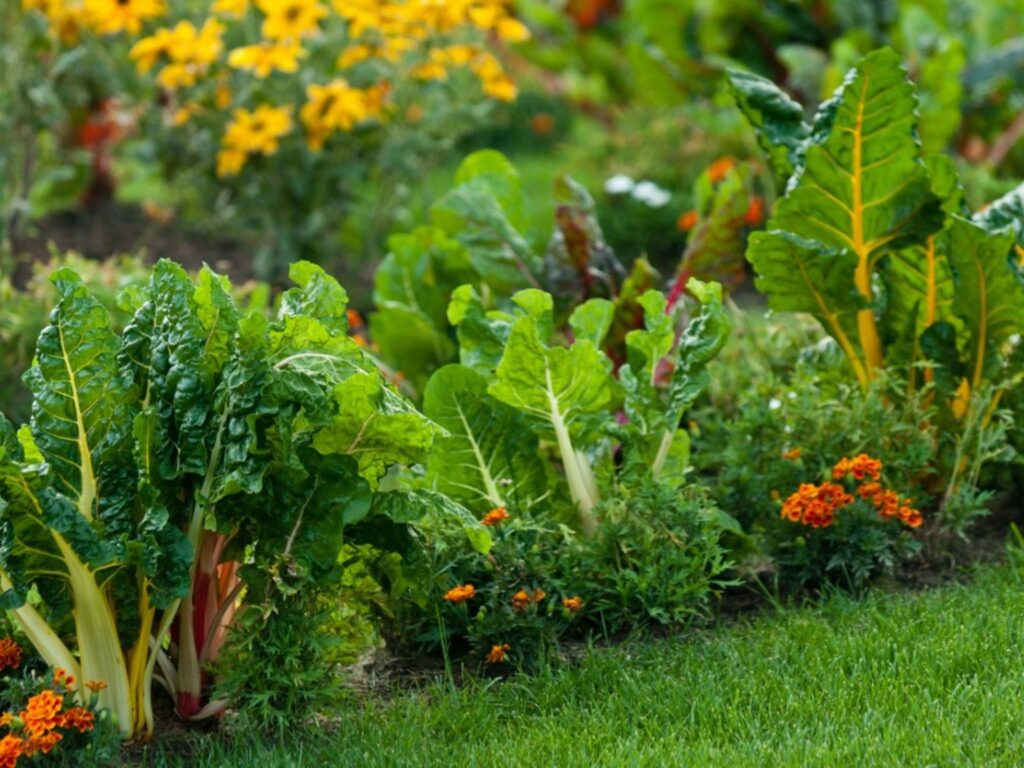
Embarking on an Exotic Edible Adventure
Imagine stepping into your garden and being greeted not by the familiar sights of tomatoes and lettuce, but by the vibrant colors and intriguing shapes of exotic fruits and vegetables. Growing exotic edible plants is more than just a hobby; it’s an adventure, a culinary exploration, and a way to connect with cultures and flavors from around the globe. It’s about transforming your backyard into a miniature paradise, bursting with unique tastes and textures that you won’t find in your local supermarket.
But where do you begin? The world of exotic edible plants can seem daunting, filled with unfamiliar names and intricate growing requirements. This guide is designed to demystify the process, providing you with the knowledge and confidence to successfully cultivate your own collection of extraordinary edibles. We’ll delve into everything from selecting the right plants for your climate to mastering the art of propagation and pest control. Get ready to unlock a world of flavor and transform your garden into a captivating edible landscape.
Why Grow Exotic Edible Plants? The Allure of the Uncommon
Before we dive into the ‘how,’ let’s explore the ‘why.’ Why should you consider adding exotic edible plants to your garden? The reasons are as diverse and compelling as the plants themselves.
A Symphony of Flavors
Perhaps the most obvious draw is the opportunity to experience a wider range of flavors. Forget the predictable taste of mass-produced fruits and vegetables. Exotic edibles offer a symphony of tastes, from the tangy sweetness of passion fruit to the subtle earthiness of chayote squash. Imagine adding a burst of calamansi lime to your cocktails or savoring the creamy texture of cherimoya. These are flavors that will tantalize your taste buds and elevate your culinary creations.
A Feast for the Eyes
Exotic edible plants are not just delicious; they’re also visually stunning. Many boast vibrant colors, unusual shapes, and captivating textures that will transform your garden into a work of art. Consider the fiery red blooms of roselle hibiscus or the intricate patterns of a dragon fruit cactus. These plants are conversation starters, adding a touch of the extraordinary to your outdoor space.
A Sustainable Choice
Growing your own food, whether it’s common or exotic, is a sustainable practice. By reducing your reliance on commercially grown produce, you’re minimizing your carbon footprint and supporting local biodiversity. Many exotic edible plants are also well-suited to organic gardening practices, allowing you to cultivate healthy, flavorful food without the use of harmful chemicals.
A Learning Experience
Growing exotic edible plants is a continuous learning experience. You’ll gain a deeper understanding of botany, horticulture, and the interconnectedness of ecosystems. You’ll learn about the specific needs of each plant, from soil composition to watering techniques. And you’ll develop a greater appreciation for the diversity and resilience of the natural world.
A Connection to Culture
Many exotic edible plants have deep cultural roots, representing traditions and culinary practices from around the world. By growing these plants, you’re not just cultivating food; you’re connecting with different cultures and expanding your understanding of global cuisines. You might even discover new recipes and cooking techniques that have been passed down through generations.
Choosing the Right Plants: Climate, Space, and Taste
One of the most crucial steps in growing exotic edible plants is selecting the right varieties for your specific environment. Not all plants thrive in all climates, and it’s essential to consider your local growing conditions before making any purchases.
Understanding Your Climate Zone
The USDA Plant Hardiness Zone Map is a valuable tool for determining which plants are likely to survive in your area. This map divides the United States into zones based on average minimum winter temperatures. Each zone represents a 10°F range, and plants are typically labeled with the zones in which they can be grown successfully. Keep in mind that this is just a guideline, and microclimates within your garden can also influence plant survival.
Assessing Your Space
Consider the amount of space you have available before selecting your plants. Some exotic edibles, like certain types of fruit trees, can grow quite large and require ample room to spread. Others, like herbs and leafy greens, can be grown in containers or small garden beds. Think vertically! Trellises and hanging baskets can maximize space and add visual interest to your garden.
Considering Your Taste Preferences
Ultimately, the best exotic edible plants for you are the ones you enjoy eating! Research different varieties and choose plants that appeal to your taste buds. Don’t be afraid to experiment and try new things. You might discover a new favorite fruit or vegetable that you never knew existed.
Popular Exotic Edible Plants to Consider
- Passion Fruit (Passiflora edulis): A tropical vine that produces sweet and tangy fruits, perfect for juices, desserts, and cocktails. Requires warm temperatures and well-drained soil.
- Dragon Fruit (Hylocereus undatus): A striking cactus with vibrant pink or yellow fruits. Requires warm temperatures and well-drained soil.
- Roselle Hibiscus (Hibiscus sabdariffa): A beautiful plant with edible flowers and calyces, used to make jams, teas, and sauces. Thrives in warm climates.
- Yuca (Manihot esculenta): A starchy root vegetable that is a staple food in many tropical countries. Requires warm temperatures and well-drained soil.
- Chayote Squash (Sechium edule): A versatile squash that can be eaten raw or cooked. Requires warm temperatures and a long growing season.
- Calamansi Lime (Citrus microcarpa): A small, tart citrus fruit that is popular in Southeast Asian cuisine. Requires warm temperatures and well-drained soil.
- Cherimoya (Annona cherimola): A creamy, custard-like fruit with a sweet and slightly acidic flavor. Requires mild temperatures and well-drained soil.
- Goji Berry (Lycium barbarum): A small, red berry that is packed with antioxidants. Tolerates a wide range of climates.
- Jicama (Pachyrhizus erosus): A crisp, refreshing root vegetable that can be eaten raw or cooked. Requires warm temperatures and a long growing season.
- Galangal (Alpinia galanga): A rhizome similar to ginger, used in Southeast Asian cuisine. Requires warm temperatures and moist soil.
Sourcing Your Plants: Seeds, Seedlings, and Cuttings
Once you’ve decided which exotic edible plants you want to grow, you’ll need to acquire them. There are several options for sourcing your plants, each with its own advantages and disadvantages.
Seeds
Growing from seed is often the most economical option, and it allows you to choose from a wider variety of cultivars. However, it can also be the most time-consuming and challenging method. Some exotic edible plants have specific seed germination requirements, such as scarification or stratification. Be sure to research the specific needs of each plant before sowing your seeds.
Seedlings
Purchasing seedlings from a local nursery or garden center is a convenient way to get a head start on the growing season. Seedlings are already established and have a higher chance of survival than seeds. However, they can be more expensive than seeds, and you may have a limited selection of cultivars.
Cuttings
Many exotic edible plants can be propagated from cuttings. This involves taking a piece of stem or leaf from a mature plant and rooting it in water or soil. Propagation from cuttings is a relatively easy and inexpensive way to expand your collection of exotic edibles. However, it requires access to a mature plant from which to take cuttings.
Grafting
Grafting is a more advanced propagation technique that involves joining two plants together, typically a rootstock and a scion. This is often used for fruit trees to combine the desirable traits of two different varieties. Grafting requires specialized skills and equipment, but it can be a valuable tool for propagating certain exotic edible plants.
Creating the Ideal Growing Environment: Soil, Light, and Water
Providing your exotic edible plants with the right growing environment is essential for their health and productivity. This includes ensuring they have access to the right soil, light, and water.
Soil Preparation
Most exotic edible plants prefer well-drained soil that is rich in organic matter. Amend your soil with compost, manure, or other organic materials to improve its fertility and drainage. Consider conducting a soil test to determine the pH level and nutrient content of your soil. You may need to adjust the pH or add specific nutrients to meet the needs of your plants.
Light Requirements
The amount of sunlight your exotic edible plants need will vary depending on the species. Some plants, like passion fruit and dragon fruit, require full sun (at least 6 hours of direct sunlight per day). Others, like galangal and chayote squash, can tolerate partial shade. Be sure to research the specific light requirements of each plant before planting.
Watering Techniques
Proper watering is crucial for the health of your exotic edible plants. Overwatering can lead to root rot, while underwatering can stunt growth and reduce yields. Water deeply and infrequently, allowing the soil to dry out slightly between waterings. Consider using a soaker hose or drip irrigation system to deliver water directly to the roots of your plants.
Fertilizing Your Plants
Exotic edible plants benefit from regular fertilization. Use a balanced fertilizer that is specifically formulated for fruits and vegetables. Follow the instructions on the fertilizer label carefully, and avoid over-fertilizing, which can damage your plants. Consider using organic fertilizers, such as compost tea or fish emulsion, to provide your plants with a slow-release source of nutrients.
Pest and Disease Management: Protecting Your Precious Plants
Like all plants, exotic edibles are susceptible to pests and diseases. Regular monitoring and proactive management can help prevent problems and protect your precious plants.
Common Pests
Some common pests that can affect exotic edible plants include aphids, spider mites, whiteflies, and caterpillars. Inspect your plants regularly for signs of infestation, such as leaf damage, webbing, or honeydew. Use organic pest control methods, such as insecticidal soap, neem oil, or horticultural oil, to control pests.
Common Diseases
Some common diseases that can affect exotic edible plants include fungal diseases, such as powdery mildew and leaf spot, and viral diseases. Prevent diseases by providing your plants with good air circulation, avoiding overwatering, and removing any infected plant material. Use organic fungicides, such as copper sulfate or sulfur, to control fungal diseases.
Integrated Pest Management (IPM)
Integrated Pest Management (IPM) is a holistic approach to pest and disease management that emphasizes prevention and uses a combination of methods to control pests and diseases. IPM strategies include selecting disease-resistant varieties, maintaining healthy soil, providing adequate water and light, and using organic pest control methods only when necessary.
Harvesting and Enjoying Your Exotic Edibles
The moment you’ve been waiting for: harvesting the fruits (or vegetables, or leaves!) of your labor. Knowing when and how to harvest your exotic edibles is crucial for ensuring the best flavor and quality.
Knowing When to Harvest
The timing of harvest will vary depending on the specific plant. Some fruits, like passion fruit and dragon fruit, are ready to harvest when they change color and become slightly soft to the touch. Vegetables, like chayote squash and jicama, are ready to harvest when they reach their mature size. Leaves, like roselle hibiscus leaves, can be harvested throughout the growing season.
Harvesting Techniques
Use sharp, clean tools to harvest your exotic edibles. This will help prevent the spread of disease. Handle the fruits, vegetables, or leaves gently to avoid bruising or damaging them. Store your harvested edibles in a cool, dry place to prolong their shelf life.
Culinary Uses
The culinary possibilities for exotic edible plants are endless. Use passion fruit to make juices, desserts, and cocktails. Add dragon fruit to smoothies, salads, and fruit platters. Use roselle hibiscus to make jams, teas, and sauces. Cook yuca like potatoes, frying, boiling, or baking it. Sauté chayote squash with other vegetables or add it to soups and stews. Use calamansi lime to flavor drinks, sauces, and marinades. Enjoy cherimoya fresh, or use it in smoothies and desserts. Add goji berries to trail mix, oatmeal, or yogurt. Eat jicama raw, or add it to salads and slaws. Use galangal to flavor curries, soups, and stir-fries.
Beyond the Basics: Expanding Your Exotic Edible Garden
Once you’ve mastered the basics of growing exotic edible plants, you can start to explore more advanced techniques and expand your garden. Consider these ideas:
Vertical Gardening
Vertical gardening is a great way to maximize space in a small garden. Use trellises, arbors, or hanging baskets to grow vining plants like passion fruit, chayote squash, and climbing beans.
Succession Planting
Succession planting involves planting crops at staggered intervals to ensure a continuous harvest throughout the growing season. This is particularly useful for leafy greens and herbs.
Companion Planting
Companion planting involves planting different species of plants together that benefit each other. For example, planting basil near tomatoes can help repel pests. Marigolds are also a great companion plant, helping to deter nematodes in the soil.
Seed Saving
Saving seeds from your exotic edible plants is a great way to preserve heirloom varieties and adapt plants to your local growing conditions. Be sure to choose open-pollinated varieties for seed saving.
Creating a Tropical Oasis
Transform your garden into a tropical oasis by incorporating exotic edible plants with other tropical ornamentals. Add palm trees, ferns, and orchids to create a lush and inviting space.
Conclusion: The Rewarding World of Exotic Edible Plants
Growing exotic edible plants is a rewarding and enriching experience. It’s a way to connect with nature, expand your culinary horizons, and create a beautiful and sustainable garden. With a little research, planning, and effort, you can transform your backyard into a miniature paradise, bursting with unique flavors and captivating beauty. So, embrace the adventure and embark on your own exotic edible journey! The world of uncommon flavors and vibrant colors awaits you.
